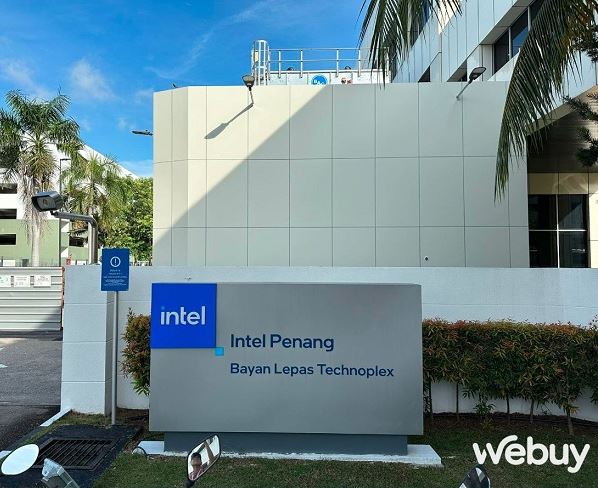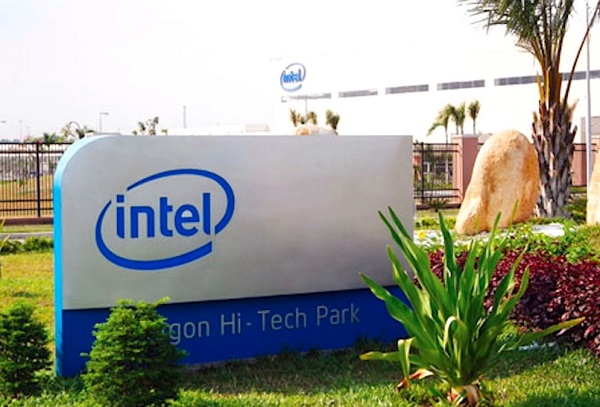Not the US, but Malaysia is the place where Intel’s world’s largest high-end 3D chip packaging factory is located, why is that?
Malaysia is by far Intel’s largest overseas base, with more than 10,000 employees in the company’s two headquarters in Penang and Kulim. It is one of Intel’s largest assembly and testing facilities, along with other functions such as manufacturing, design, development, and global support services.
But during the “Intel Tech Tour” event on August 21 in Penang, Malaysia, Intel said it would invest another $7 billion to scale up its operations in Malaysia.
The company also revealed about a new factory under construction in Penang, Malaysia. This will be Intel’s first overseas factory to package chips under advanced 3D technology, also known as Intel’s Foveros technology. This will make Malaysia the world’s largest packer of 3D chips, surpassing Intel’s home country of America.
Intel factory in Penang, Malaysia.
Intel’s strategy to diversify production bases
One of the most significant transformations for the tech giant since Pat Gelsinger assumed leadership is Intel’s alteration in its location strategy. One of the focuses of Intel’s strategy to diversify its manufacturing base is expanding investments in Asia.
Not only Malaysia, Intel also increased investment in Vietnam. By the end of 2021, Intel has poured about $1.5 billion into its operations in Vietnam. However, a Reuters source said that Intel is in talks to significantly expand the packaging and product testing plant at this place with a new investment of up to $ 1 billion. This move is a sign of Vietnam’s significant increasing role in the semiconductor supply chain, not only for Intel but also on a world scale.
Intel is not only expanding production in Asia but also setting its sights on Europe. Multiple reports say that Intel is in talks with Germany to increase subsidies for a 20 billion euro factory in Magdeburg.
Not only Malaysia, Intel also plans to expand its operations in Vietnam
In June, Intel made an announcement about constructing a semiconductor assembly and testing facility worth $4.6 billion in Poland while simultaneously engaging in discussions regarding the establishment of a factory. similar in Italy. It is worth noting that the process of building new factories is still promoted by Intel when the market demand is dropping significantly.
That’s because this is not only aimed at diversifying Intel’s production sites, but also as part of a larger strategy called IDM 2.0 (Integrated Semiconductor Company), to move Intel from a purely open chip company. expanded to other semiconductor manufacturing services.
IDM 2.0
Mr. Steve Long, Intel’s Asia Pacific general manager, stated, “Intel has employed the IDM (Integrated Semiconductor Company) strategy since its inception, spanning decades. The dynamic shifts in the business landscape necessitate a comprehensive alteration of our entire business model.”
The IDM 2.0 strategy outlined by Intel CEO Pat Gelsinger, which has been in place since 2011 has three goals: self-manufacturing core and critical products, strategically leveraging external chip foundries, and finally is to expand in-house production capabilities to the outside world.
If up to now, Intel’s production capacity was only to create the company’s products, now, chip factories and chip packers are expanding their services to external partners. For Intel, this underscores the significance of diversifying semiconductor manufacturing and packaging locations.
Mr. Steve Long added: “New customers such as Ericsson and ARM have all said they are using Intel’s 18A process. We are recently working with Synopsys, a company specializing in EDA (autonomous software). circuit design) to optimize Intel’s 3/18A process.”
Mr. Long mentioned that Intel is actively engaged in the UCIe (Universal Chiplet Interconnect Express) Joint Venture, which facilitates seamless interconnection of semiconductor products produced in various facilities. This advancement enables customers to effortlessly craft their desired products.
This is even more important as this year is witnessing a boom in generative AI, resulting in a sudden increase in demand for semiconductor packaging with more advanced technology, to increase processing capacity to catching up with the growth in processing needs of new artificial intelligence services.
In addition to entering the chip foundry and chip packaging service playground, Intel also directly competes for a piece of the pie of TSMC, the company that holds the largest market share in the semiconductor processing playground today.












